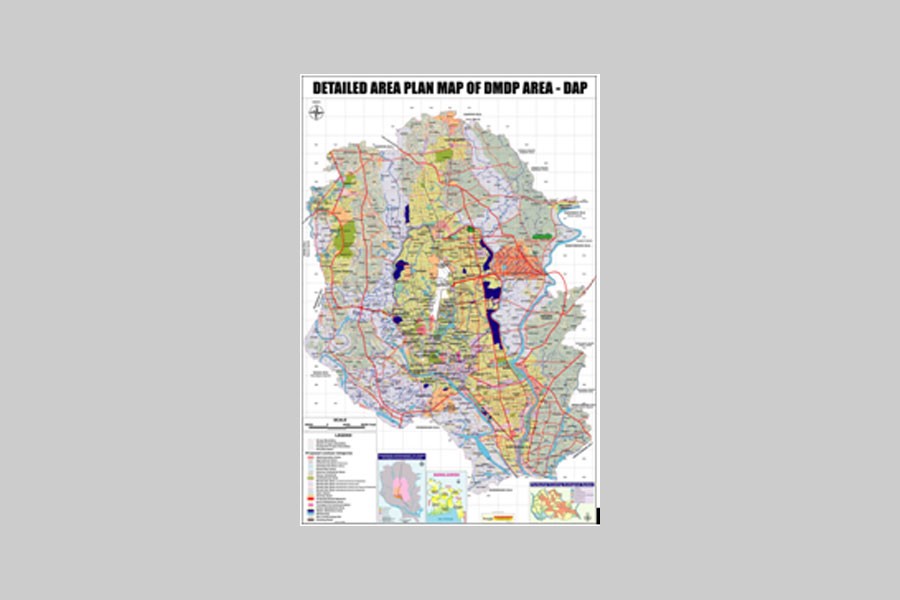
Published :
Updated :

An initiative is reportedly underway to amend the capital city's detailed area plan (DAP). Approved only a year before, the DAP could not be what it ought to have been because of the undesirable transformation already brought about illegally to geomorphic features both within the city parameter and in its neighbourhood and also under pressure from influential and vested quarters. This latest initiative is triggered by those quarters and once again, the government agencies responsible for execution of the plan seems to have capitulated to such pressures. That the authorities are ready to appease the vested quarters ahead of a national election is clear no matter if such tinkering with the DAP turns an unliveable city still more unliveable and unsustainable.
The Institute for Planning and Development (IPD) and other urban planners accuse the Rajdhani Unnayan Kartripakkha (RAJUK) of making compromises on several counts under such pressures. This time the pressure is on for creating an opportunity for developers to increase floor area ratio (FAR) of buildings. Then the already distorted population density zoning once again faces similar reversals with double or even more population living in a place meant for inhabited by a rationally designated size in order to maintain balanced and sustainable development. Human liveability will get severely compromised, the IPD expresses its apprehension, because of non-compliance with the DAP's do's and don'ts. At issue is not just the poor liveability but also the urban population's health with the commercially developed crammed housing arrangement. In a larger frame, the population density only puts pressure on the city's utility services, traffic system and other open urban spaces such as playgrounds, parks, lakes not to mention centres for cultural activities.
Those responsible for shaping the DAP in its approved form last year had no option other than planning with the already radically transformed topography around the city. Most of the flood plains and water retention areas along with the water bodies within the city's extended parameter had long been filled up. Those could not be reversed. In fact, the city is on life support ever since its lifeline, the Buriganga and other rivers have been grossly abused, grabbed and polluted with industrial waste---both solid and effluent. Dwindling green space and heavy pollution have been taking an atrocious toll on the inhabitants' health and well-being.
So the latest move to tinker with the DAP, the execution of which demands prudent and painstaking private-public cooperation, is likely to throw the future of the plan into uncertainty. This must not happen to the urban plan developed by a most capable team of urban planners. The inhabitants of the capital as well as the people in general deserve better. There is no point concentrating population in a limited urban space. The ambivalence of city development is clear from the urban mega projects. They encourage people to cram the city. However, projects like the Padma Bridge and the modern highways already built and are under construction can help dispersal of city population and even may end up triggering reverse migration. If utility services and modest infrastructure in other parts complement such fast and smooth communication, they can take the pressure off from the capital city. So it would be unwise to put people in cage-like accommodations with no sunlight and airflow in the premier urban centre.


 For all latest news, follow The Financial Express Google News channel.
For all latest news, follow The Financial Express Google News channel.